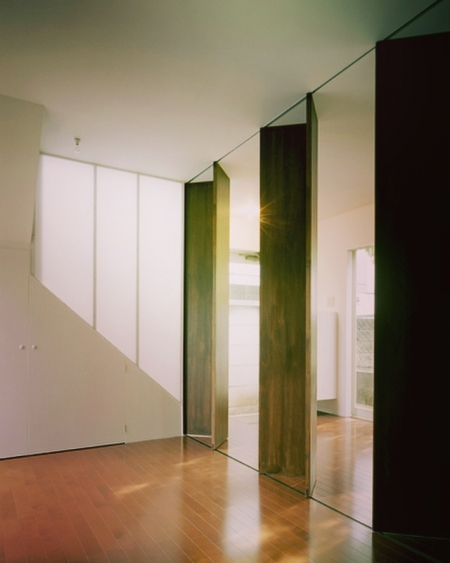壁ばかり毎日見てるから気がついた建築のズレ
毎日毎日、壁を見て暮らしているような感じがする。普段から在宅ワークだが、今までこんなに壁を意識したことは無い。Stay Homeだからか、このような状況だからだろうか、外との境界である壁を妙に意識してしまう。
そこに壁があるだけで安心してしまうのだが、朝日を浴びたり、夕日が差し込んだりすると、それだけで気分が良くなり、それは壁のどこの位置に、どのくらいの大きさの窓があるか、窓も壁の一部、壁が気分を左右するとも言える。
今までは、太陽の位置と周辺環境から、室内に、どの時間帯に、どこまで太陽の光が差し込むかが計算できるので、ここに窓を開ければ気持ちの良い光が差し込むだろう、簡単に言うと、差し込む光の量を設計して、あとはそこにいる人は気持ち良いと思うのが前提だった。
それは、光を取り入れるやり方を設計していただけであり、そこにいる人の気持ち良さを実現することを直に設計していた訳では無かった。そして、そのことに毎日毎日、壁を見て暮らしていて気がついた。
壁があり、そこに窓を開ける、それだけで外ともつながり、差し込む光は当たり前に気持ちが良い、それでは足りなかった、人の気分を受け止めるにはやり方の設計では無くて、人の気分そのものを直に反映できる建築デザインが必要だった。
"I saw the walls every day, and noticed the architectural gap"
Every day, I feel like I am living by looking at the walls. I usually work from home, but I have never been so conscious of walls. Perhaps because it's Stay Home or this situation, I strangely think about the wall that is the boundary with the outside.
I feel relieved just because there is a wall there, but when the sun rises or the sunset comes in, it makes me feel better, that is where the wall is, how big the window is, It can be said that a part of the wall, the wall affects the mood.
Up until now, it is possible to calculate from the position of the sun and the surrounding environment how much time the sun will shine into the room, so if you open a window here, you will be able to immerse yourself in pleasant light. The idea was to design the amount of light coming in and think that the rest of the people would feel comfortable.
It was only a way of designing a way to take in light, not a direct design of the comfort of the people there. And I noticed that I was living by looking at the wall every day.
There is a wall, there is a window there, it connects to the outside only, and the light that comes in is naturally pleasant, it was not enough, it was not a design of a way to catch the mood of a person I needed an architectural design that could be reflected in.


